
Living Root Bridges Cherrapunji
Witness nature's living architecture: ancient root bridges woven by hand over decades in Meghalaya's lush forests.
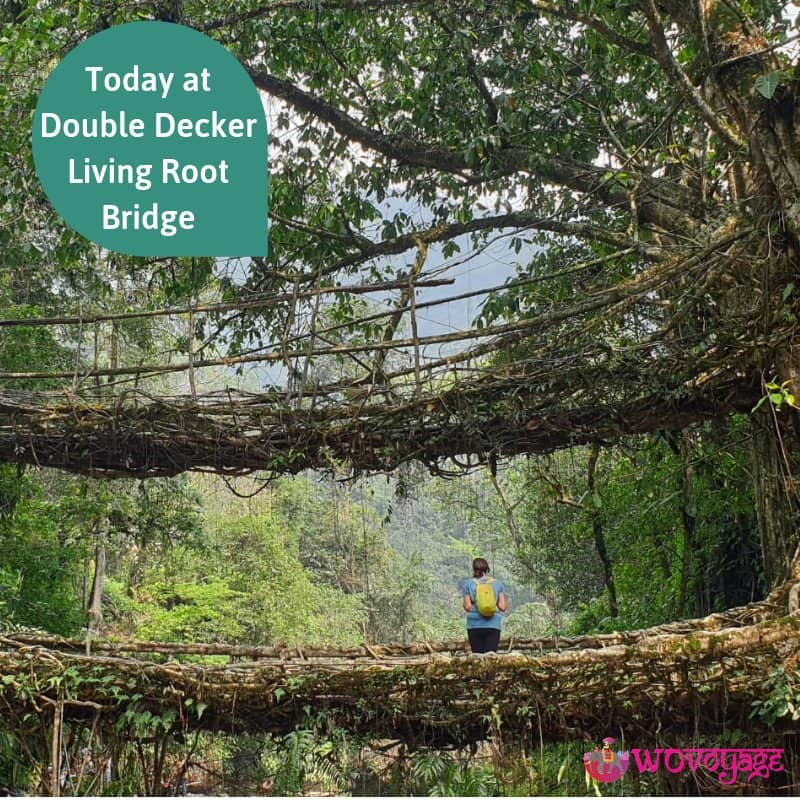
Highlights
Must-see attractions
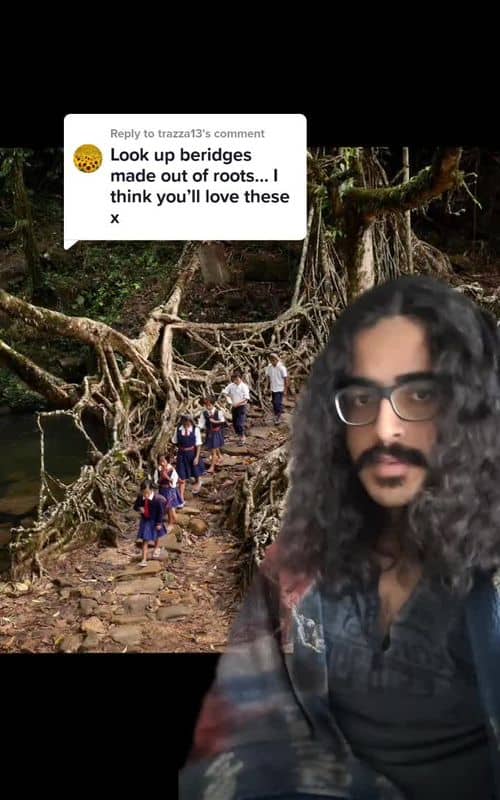
Social
From TikTok & Reddit
Best Time
Beat the crowds and heat

Living Root Bridges Cherrapunji
Best Time
Beat the crowds and heat

Highlights
Must-see attractions
Witness nature's living architecture: ancient root bridges woven by hand over decades in Meghalaya's lush forests.
"Absolutely worth every step! The living root bridges are a marvel of nature and human ingenuity."
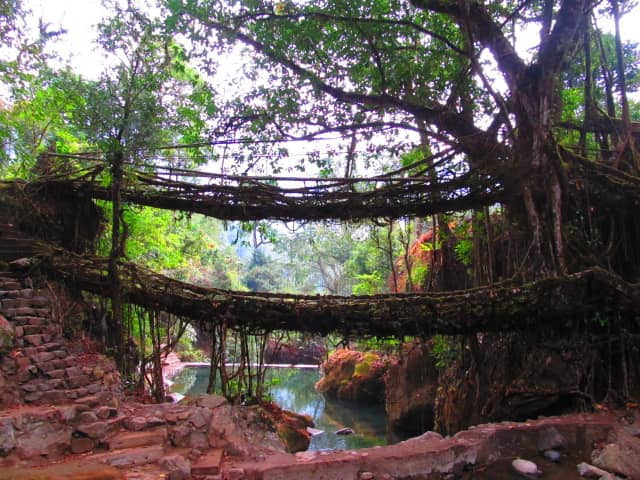
👟 Sturdy Trekking Shoes Essential
Thousands of steep steps await! Comfortable, grippy shoes are a must for the trek .
💧 Carry Plenty of Water
Stay hydrated on the long trek. Vendors sell water and snacks, but it's good to start prepared .
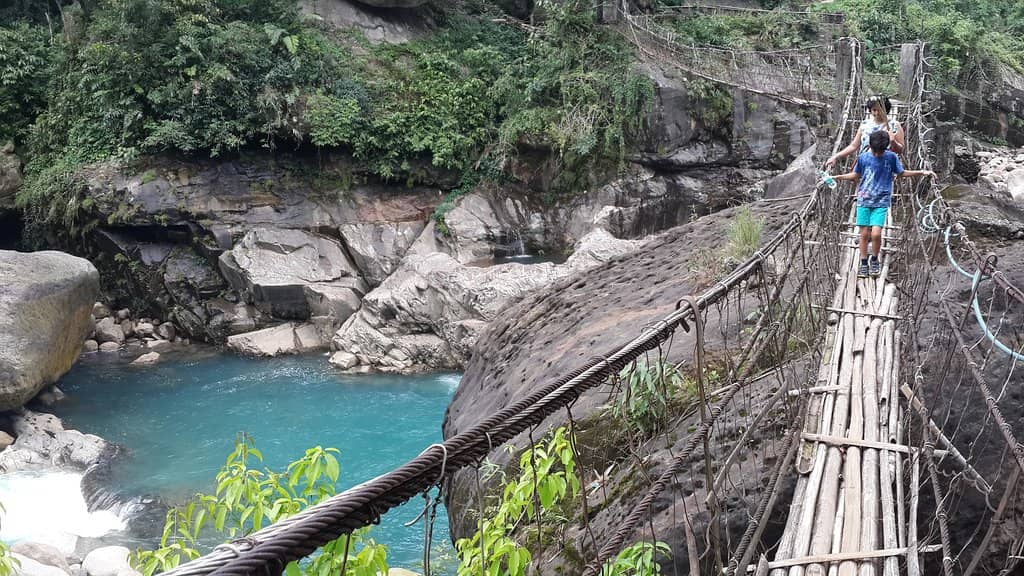
Highlights
Discover the most iconic attractions and experiences
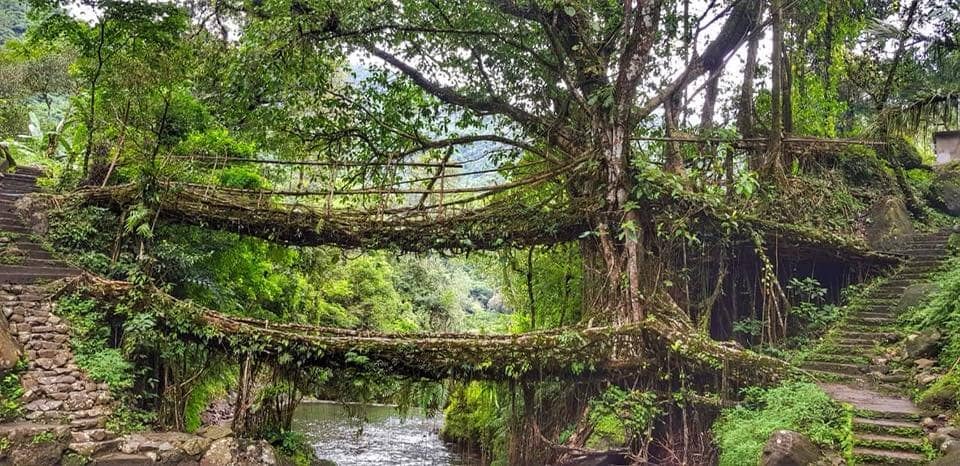
Double Decker Living Root Bridge
Nongriat Village
Witness nature's engineering marvel: living roots woven into a strong, self-healing bridge.
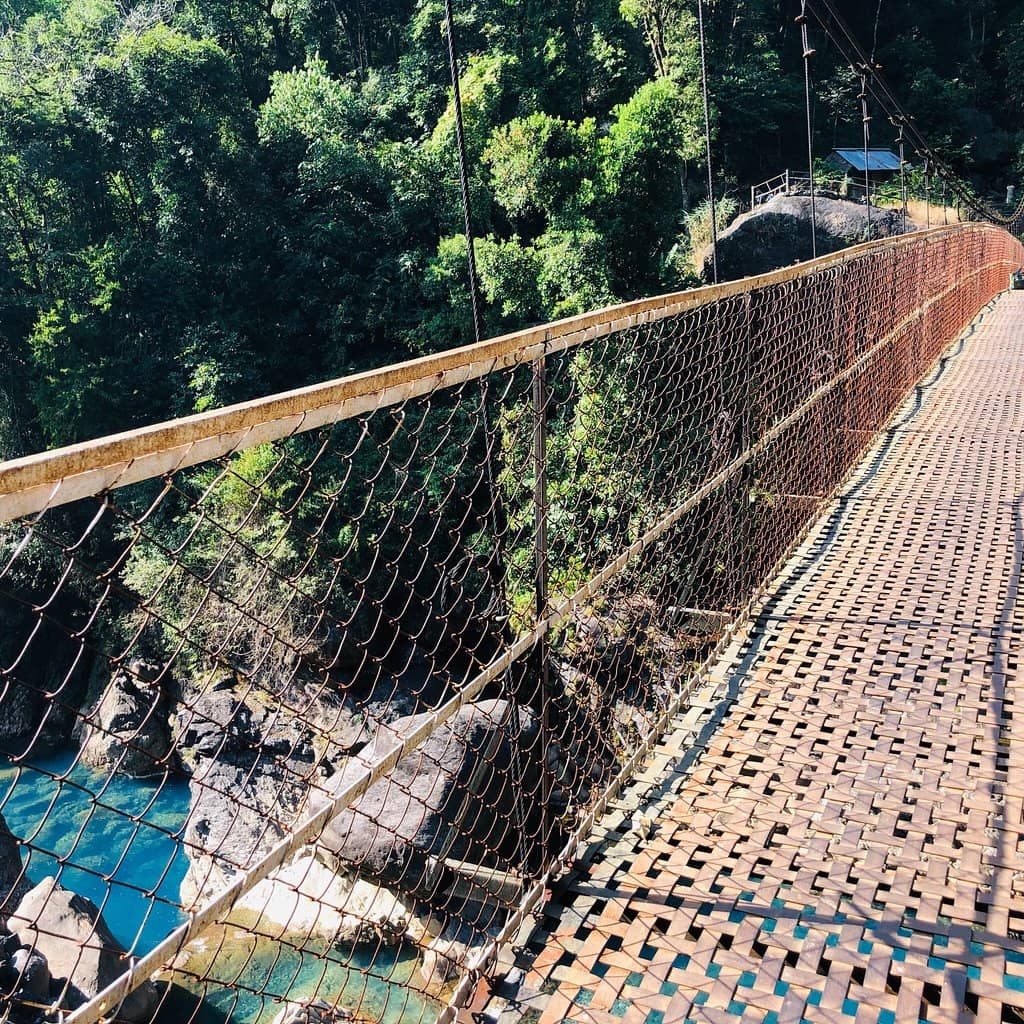
Single Root Bridge
En route to Double Decker Bridge
An impressive precursor to the main attraction, showcasing the early stages of root guidance.
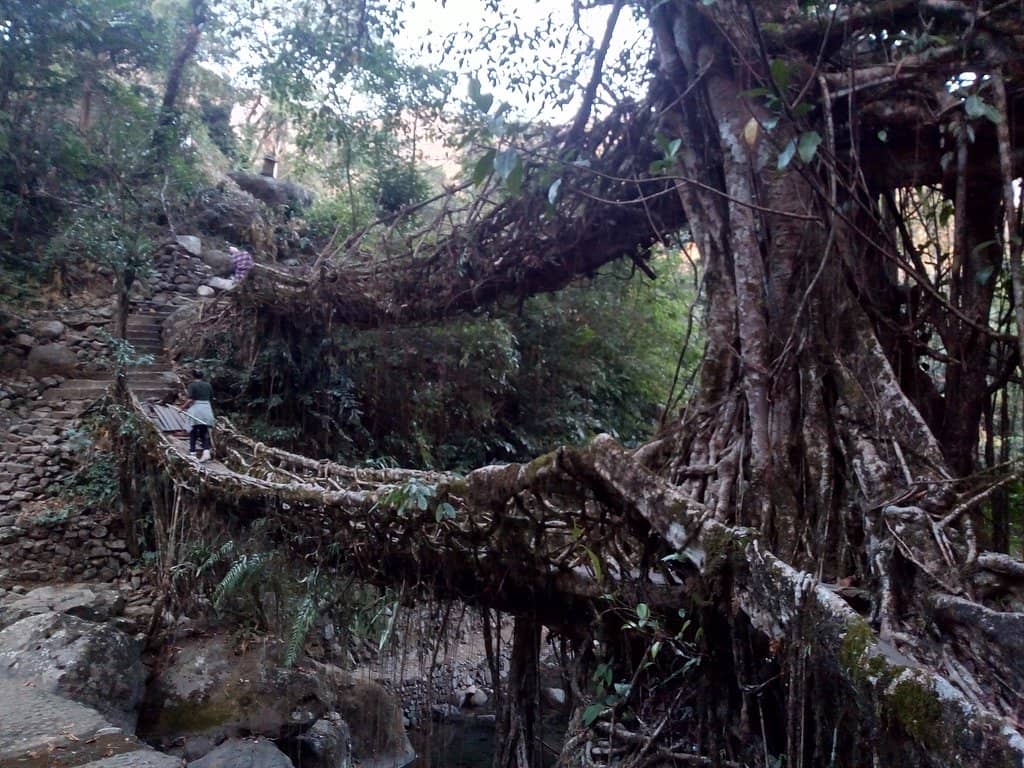
Blue Lagoon
Near Double Decker Bridge
A natural, refreshing pool perfect for a dip after a challenging trek.
Plans like a pro.
Thinks like you
Planning Your Visit
Trek Smart: Prepare for the Steps
Timing is Key for the Best Views
Best Times
Insider Tips
from TikTok, Instagram & Reddit
👟 Sturdy Trekking Shoes Essential
Thousands of steep steps await! Comfortable, grippy shoes are a must for the trek.
💧 Carry Plenty of Water
Stay hydrated on the long trek. Vendors sell water and snacks, but it's good to start prepared.
🧥 Pack a Raincoat
Meghalaya means 'abode of clouds,' so rain is always a possibility.
🧳 Trek Light
The journey involves many steps; the lighter you pack, the easier the trek.
Tips
from all over the internet
👟 Sturdy Trekking Shoes Essential
Thousands of steep steps await! Comfortable, grippy shoes are a must for the trek.
💧 Carry Plenty of Water
Stay hydrated on the long trek. Vendors sell water and snacks, but it's good to start prepared.
🧥 Pack a Raincoat
Meghalaya means 'abode of clouds,' so rain is always a possibility.
🧳 Trek Light
The journey involves many steps; the lighter you pack, the easier the trek.
🏠 Consider a Night Stay
Stay near the bridges to explore Rainbow Falls and Blue Lagoon without rushing.
📸 Capture the Magic
The living root bridges offer unique photo opportunities. Don't forget your camera!
What Travellers Say
Reviews Summary
Visitors are awestruck by the natural wonder of the Living Root Bridges, calling them a must-see in Meghalaya. The trek is challenging but rewarding, with many praising the refreshing Blue Lagoon and the unique experience of walking on living architecture. Some find the sheer number of steps daunting, and recommend planning for an overnight stay to fully explore.
"I had heard a lot about this natural root bridge made up of bayan roots.Then I moved from Kerala to Meghalaya. The way to this double decker root bridge was little bit challenging to cover around 4000 steps from Nongriat villege 8km far from chirapunji market.I Saw many root bridges and man made bridges in trekking to double decker root bridge.Anyone who come to Meghalaya must visit this UNESCO listed natural bridges.
If you are coming with family better to book the accommodation in advance. If backpacker you can get some rooms nearby the village.."
Najash Babu
"The Double Decker Living Root Bridge trek is one of the toughest treks in Northeast India. The trek has two parts – the first takes you to the Single Root Bridge, and the second leads to the iconic Double Decker Root Bridge. I went with my friends, and we managed to complete the entire trek, although one of my friends couldn’t complete the second part.
After reaching the final destination, we found a natural pond near the bridge where we took a refreshing bath. It helped wash away all the tiredness and was a perfect way to relax and enjoy the surroundings. The experience was unforgettable"
Ayaan Deori
"Its our frnd circle 5 person We are traveling Meghalya it is the one of the best place to explore it ,and also the monsoon session views and feel are gives you a different enrgy then you realised it energy , 3500 stairs down then you see the view is out of mind
Suggestions
. You explore in morning like 7am & 8am (because its cover a hole day)
. Rain coat , water bottles, same snacks also store it
. 3500 stairs down thier are night stays option are also available (but my suggestion you will explore in 1 day down stair and up stair are both)"
Tejasvi Agrahari
What People Like
What People Dislike
Frequently Asked Questions
🚇 🗺️ Getting There
The bridges are located in Nongriat village, accessible via a trek from Tyrna village, which is about 8 km from Cherrapunji market. You'll need to hire a taxi to Tyrna village. From there, it's a trek down thousands of steps.
No, you cannot drive directly to the bridges. The final approach is a challenging trek on foot, as highlighted by many travelers.
Cherrapunji (also known as Sohra) is the nearest major town. From Cherrapunji, you'll need to arrange transport to the trekking starting point, typically Tyrna village.
The drive from Cherrapunji to Tyrna village takes about 30-45 minutes. The trek itself can take 2-4 hours one way, depending on your pace and how far you go (e.g., to the Double Decker, Blue Lagoon, or Rainbow Falls).
Yes, local guides are often available at the starting point of the trek. They can be very helpful, especially if you're unfamiliar with the route or want to learn more about the bridges' history and construction.
🎫 🎫 Tickets & Entry
There isn't a formal ticket counter for the bridges themselves. However, there might be small local fees or contributions requested by the village community for maintenance or entry to certain areas. It's best to be prepared for small charges.
The bridges are natural formations and are generally accessible at any time. However, visiting during daylight hours is highly recommended for safety and visibility during the trek.
While there isn't a strict entry fee for Nongriat village, it's a community-run area. Visitors are expected to be respectful and may be asked for a small contribution towards the upkeep of the trails and bridges.
Yes, the monsoon season offers a unique experience with lush greenery and powerful waterfalls. However, the trails can be slippery, so extra caution is advised.
The main restriction is the physical challenge of the trek. Visitors should be in good physical condition. Respecting the local culture and environment is paramount.
🎫 🏞️ Onsite Experience
The trek is considered challenging due to the thousands of steep steps. It involves significant descent and ascent, testing physical stamina.
Estimates vary, but many sources mention around 3,500 steps one way to the Double Decker bridge.
Beyond the Double Decker, you can visit the Single Root Bridge, the Blue Lagoon for a refreshing swim, and the Rainbow Falls, though the latter requires further trekking.
Yes, the Blue Lagoon is a natural pool near the Double Decker bridge where visitors can take a refreshing dip to wash away the trek's tiredness.
A round trip to the Double Decker Bridge and back can take 6-8 hours for most people, including breaks and time spent at the bridge.
🍽️ 🍽️ Food & Dining
Yes, small eateries and tea stalls are available along the trekking route, especially near the Double Decker bridge. They often serve simple meals like Maggi noodles and local snacks.
Expect basic, hearty fare suitable for trekkers. Maggi noodles are a popular choice, along with local snacks and beverages. Some homestays also offer meals.
It's advisable to carry some snacks and water, especially if you plan to trek further to Rainbow Falls. However, you can find basic food options along the main route.
Nongriat is a small village, and dining options are limited to small local eateries and homestays. It's more about sustenance than fine dining.
Most of the food options are simple and can likely accommodate vegetarian preferences, especially items like noodles and snacks.
📸 📸 Photography
The bridges themselves are the main subjects. Getting different angles, including from above and below, can create stunning shots. The surrounding lush greenery also adds to the photographic appeal.
The trek is physically demanding, so taking photos while moving can be tricky. It's best to pause at viewpoints or rest stops to capture the scenery safely.
A wide-angle lens can be useful to capture the scale of the bridges and the surrounding landscape. A sturdy camera bag is essential for protection during the trek.
Generally, there are no specific restrictions, but always be mindful of the environment and local customs. Avoid disturbing the natural structure or local life.
Early morning light can be soft and beautiful, with fewer people around. Midday sun can be harsh, but can also create dramatic contrasts. The monsoon season offers dramatic, misty shots.
For Different Travelers
Tailored advice for your travel style
👨👩👧 Families with Kids
🚶♀️ Solo Travelers
💰 Budget Travelers
Deep Dives
In-depth insights and expert knowledge
The Living Architecture of Root Bridges
These bridges are not static structures; they are living and self-healing. As the roots grow, the bridges become stronger and more resilient over time, capable of holding up to 50 people or more. Unlike man-made structures that decay, these natural bridges adapt to their environment, repairing themselves and growing stronger with age. This unique bio-engineering showcases a profound understanding of nature and a sustainable approach to infrastructure, making them a UNESCO World Heritage site candidate.
Trekking to the Double Decker: A Physical Challenge
Many visitors recommend starting the trek early in the morning, ideally between 6-8 AM, to avoid the midday heat and the largest crowds. The trek can be broken down into stages, with the Single Root Bridge being the first major point, followed by the Double Decker Bridge. For those with more energy and time, further treks lead to the Blue Lagoon and the Rainbow Falls. It's advisable to wear sturdy trekking shoes, carry plenty of water, and consider a packed lunch or snacks, although small eateries are available along the route.
Experiencing Nongriat Village and Beyond
Beyond the Double Decker Bridge, the trek continues to the Blue Lagoon, a beautiful natural pool perfect for a refreshing swim, and further to the Rainbow Falls, which is said to be spectacular when the sun is at its peak. These extensions of the trek offer more opportunities to immerse yourself in the pristine natural beauty of Meghalaya. The entire experience is often described as magical and unforgettable, a true connection with nature.

Social
from TikTok, Instagram & Reddit